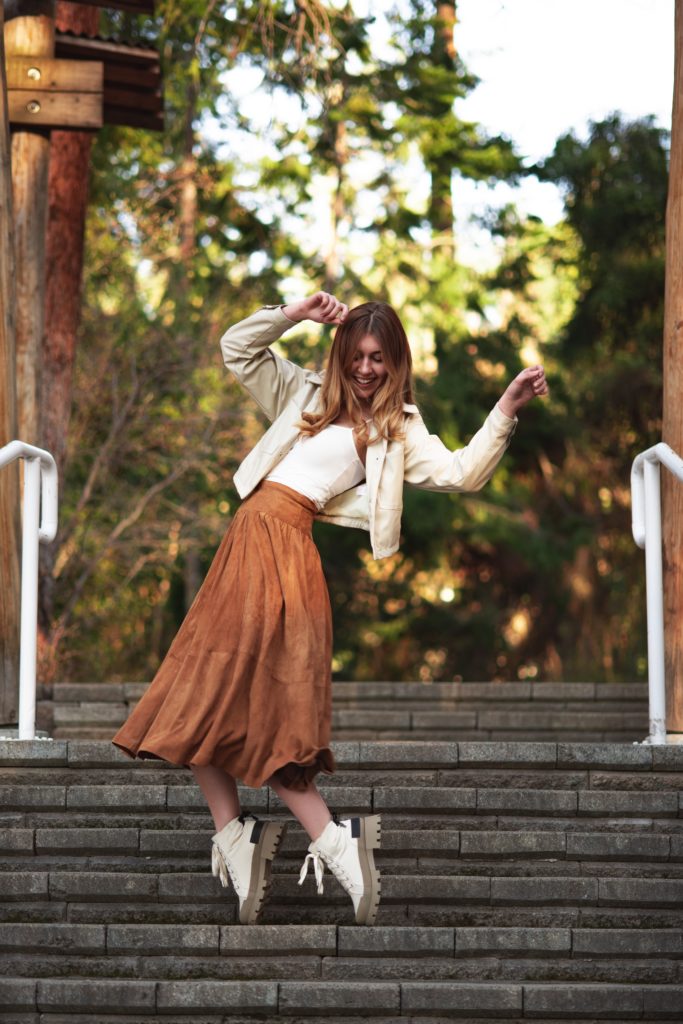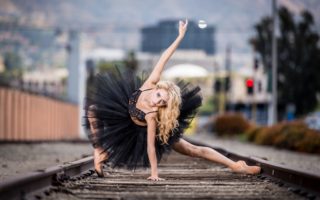 Photo by Adam Flockemann
Photo by Adam Flockemann
Types of Dance Movements
There are two major types of movements in dancing:
- Locomotor movements (traveling movements) – movements where the body travels through space from one location to another. Locomotor movements primarily use the feet for support however, the body can travel on other parts such as the hands.
- Non-locomotor movements (movements on-the-spot)- movements that occur in the body parts or the whole body and do not cause the body to travel to another space. However, non-locomotor movements can be combined with locomotor movements such as a walk and arm swing.
In the video below, you can see four simple examples of how locomotor and non-locomotor movements can be used:
- “Body roll” – non-locomotor – body roll on the spot.
- “Cross snap” – combination – small jumps to the sides (locomotor) as well as crossing and extending the arms (non-locomotor)
- “Touch step” – non-locomotor – extending feet out to the sides while remaining on the spot.
- “3-step” – combination – the steps forward and back are locomotor while the “tap” is non-locomotor)
Extra Locomotor Movement Examples
Even Rhythm:
- Walk – The walk is a transfer of weight from one foot to the other. Usually, the heel touches first.
- Run – The run is a transfer of weight from one foot to the other, however, the body is propelled into the air and suspended between run steps.
- Jump – The jump required the body to push off from one or both feet. Most common is a two-foot takeoff and two-foot landing. A jump can take off on one foot and land on two or take off from two feet and land one foot.
- Hop – The hop requires a push-off from one foot and landing on the same foot.
- Leap – A leap is performed by pushing off from one foot and landing on the other foot. The body is suspended in the and between the push-off and the landing. Can be combined with a run or walk.
Uneven Rhythm
- Skip – A combination of a step and a hop on the same foot followed by a step and hop on the other foot. The rhythm is uneven long -short. Long (the step) and short (the hop).
- Gallop – A forward movement where one foot leads the gallop while the other foot follows. The lead foot steps with a bent knee and pushes off into the air and landing on the trailing foot. The rhythm is uneven, long -short. Long (the step) and short (the landing).
- Slide – This is similar to a gallop performed with the right or left foot leading. The rhythm is uneven, long -short. Long (the step) and short (the landing).
Extra Non-Locomotor Movement Examples
- Swing – a pendular motion of a body part that can move forward and backward or side to side.
- Twist – a partial rotation of body parts around an axis
- Turn – a full rotation of the body around a vertical or horizontal axis. Full, half, or quarter turns
- Shake – a short quick vibrating movement in a body part or the whole body.
- Bend – a flex of a body part at a joint
- Stretch – extending a body part or the whole body
- Wiggle – a small or big, fast or slow curvy movement of a body part or the whole body.
- Rock or sway – a shift of the bodyweight forward, backward, side to side or in a circular pathway.”


